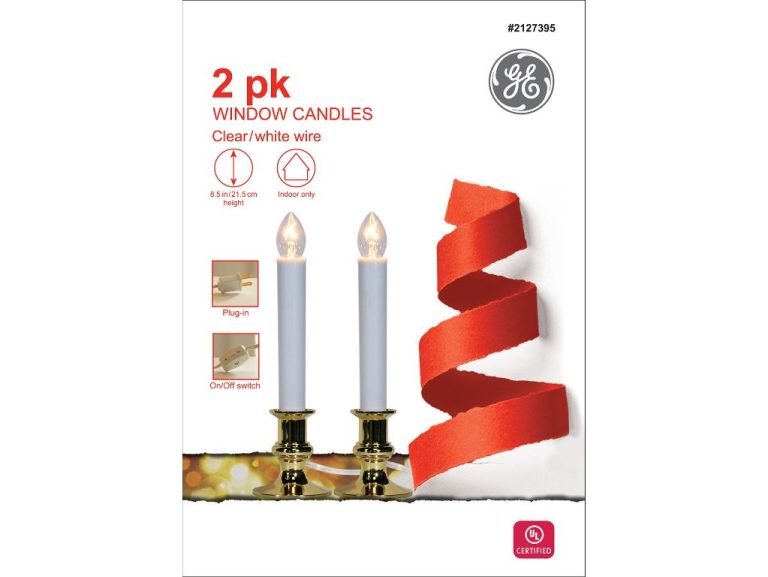Can You Make A Lot Of Money With A Candle Business?
A candle business can be a lucrative opportunity for entrepreneurs and small business owners looking to tap into a large, growing market. Candles are used in homes, offices, spas, events, and more, creating a diverse customer base. With the right strategy, product offerings, and marketing, a candle business has the potential to generate impressive profits. However, like any business, success is not guaranteed, and the candle industry comes with its own set of challenges and risks.
Before jumping in, it’s important to realistically assess the investment required, time commitment, and effort involved in starting and scaling a candle company. This overview will examine the viability of the candle business model by looking at the total addressable market, costs, potential revenue streams, and keys to standing out in a crowded industry.
Market Size
The candle industry has seen steady growth over the past decade. According to industry reports, the global candle market was valued at $11.2 billion in 2020 and is projected to reach $13.6 billion by 2026. The market is expected to grow at a CAGR of 4% during this period.
The US is the largest market for candles, accounting for over 30% of the global market share. Increased spending on home decoration, gift-giving traditions, and aromatherapy are key factors driving growth in the US candle market. Industry analysis shows that the US candle market is projected to reach a value of $3.7 billion by 2025.
Other major markets include Europe, China, Brazil, India, and Japan. Developing nations are expected to present lucrative opportunities for growth due to rising expenditure on lifestyle products and home décor. The demand for natural, eco-friendly candles is also on the rise globally.
With steady growth projections, increasing consumer demand, and opportunities in emerging markets, the candle industry represents an attractive market for new and existing players. The market outlook remains positive for those looking to capitalize on this growing industry.
Startup Costs
When starting a candle business, there are some initial investments required in equipment and supplies before you can begin production. The major costs include:
-
Candle making equipment – This includes pots, thermometers, pouring pots, scales, wax melters, etc. For basic equipment you may need around $300-$500 to start.
-
Candle making supplies – These are the raw materials like wax, wicks, fragrance oils, dyes, jars/containers, labels, packaging. Expect to spend $500-$1000 for initial inventory.
-
Workspace rental – If producing from home, this may just be the cost of a room in your house. Renting a commercial kitchen or workshop space can range from $200-$1000 per month depending on size and location.
In total, you’ll need probably $1000-$2000 or more to buy all the equipment and supplies to make your first batches of candles. This startup cost can be minimized by starting very small scale and building up slowly.
Profit Margins
Typical profit margins for handmade candles can vary quite a bit depending on your materials, production costs, pricing, and sales channels. However, many small candle businesses find they can achieve healthy profit margins between 50-80%.
On the lower end, you may generate around 50% profit margins by selling wholesale to retailers or on platforms like Amazon. However, profit margins can increase when selling direct-to-consumer through your own ecommerce store, local markets, or boutiques. This allows you to receive close to the full retail price.
To maximize profit margins, focus on controlling production costs by making candles efficiently, buying supplies in bulk, and minimizing wasted materials. Also consider pricing strategies, gifts sets, and loyalty programs to increase the average order value.
With good margins and efficient production, a well-run candle business can certainly be profitable. However, your revenue and expenses will determine the overall earnings potential.
Pricing
Determining the right pricing for homemade candles can be tricky for new entrepreneurs. You need to find the sweet spot that allows you to be profitable while still being competitive. Here are some tips on how to price your candle products:
Calculate your costs: Add up all the costs involved in making each candle, including materials, labor, packaging, and overhead. Make sure to account for the full cost per unit. You’ll need to price above this amount to have any profit margin.
Consider your time: Factor in what your time is worth for making each candle. Don’t undervalue your effort and skill that goes into candlemaking.
Research competitors: Look at pricing of similar candle products on Etsy, at craft fairs, farmers markets, and specialty boutiques. See what the going rate is for comparable candle styles, sizes, ingredients.
Think about perceived value: Price based on what customers will be willing to pay, not just your costs. Factors like gift-worthiness, aromatherapy benefits, and aesthetic appeal add to the candle’s perceived value.
Test different prices: Start high and work your way down to find the optimal price. You can even split test prices on different sales channels. Monitor sales volume and feedback at different price points.
Allow for discounts/sales: Have some flexibility to run seasonal sales and promotions if you find your candles aren’t selling at full price. This can help move inventory.
Consider your brand: How you want to position your candle brand also influences pricing. A premium positioning supports higher pricing.
Review often: Reevaluate your pricing periodically as your costs change and your brand evolves. Pricing optimization is an ongoing process.
Sales Channels
When selling candles, you have several options for getting your products in front of customers. Three of the main sales channels to consider are:
Online
Selling candles online through your own ecommerce website or third-party marketplaces like Etsy and Amazon Handmade is a popular option. You can sell globally and don’t need physical retail space. However, you’ll need photography and fulfillment capabilities.
Retail
Approaching local retail stores, gift shops, and boutiques to carry your candles is another route. You can potentially sell in bulk to retailers vs. one candle at a time online. But you may need to offer wholesale pricing at a discount.
Wholesale
Building relationships with corporate buyers to sell your candles in bulk for retail distribution or gifting is a higher volume option. This may require large orders, custom packaging, and low pricing. But the right corporate account can lead to major ongoing business.
Effective Marketing Strategies for a Candle Business
Marketing is crucial for any new business to get off the ground. Here are some of the most effective strategies for promoting a candle company:
Social Media: Platforms like Instagram and Facebook are ideal for showcasing products visually and connecting with potential customers. Post high-quality photos and videos regularly. Use relevant hashtags and location tags. Run targeted ads. Provide discounts for followers.
Search Engine Optimization: Optimize your website and online content for keywords related to candles, scents, gifts, etc. Produce blog posts, FAQs, and articles to boost visibility. Ensure site speed and mobile-friendliness.
Email Marketing: Collect email addresses and send regular newsletter updates on new products, sales, etc. Offer free samples or discounts to subscribe. Segment your list for targeted campaigns.
Influencer Marketing: Partner with social media influencers to promote your products. Offer affiliates a commission on sales. Consider promoting sample products in gift bags at events.
Pop-up Shops: Set up temporary shops at markets, fairs, and festivals. Hand out business cards and coupons. Engage customers in person.
PR Outreach: Pitch your business to media outlets. Highlight your unique value proposition in press releases. Secure features in gift guides, roundups, and seasonal stories.
Scaling Up
Once your candle business is established and profitable, you may look for ways to grow and scale up operations. Here are some options for expanding a candle business:
Expand your product line – Consider adding new candle scents, sizes, shapes, containers, or complementary products like reed diffusers or room sprays. This allows you to appeal to more customers.
Sell on new platforms – Look to get your products onto additional ecommerce sites, local boutiques, gift shops or national retailers. Each new sales channel opens up new customers.
Automate processes – Look for ways to increase efficiency through fulfillment automation, inventory management systems, or streamlined production. This allows you to scale up without vastly increasing labor costs.
Hire help – Bring on part-time or full-time help, especially to assist with labor-intensive tasks like pouring candles or managing orders. This expands your production capacity.
Expand facilities – Move into a larger production space or open an additional warehouse. This provides the physical infrastructure to produce and store more inventory.
Partner with distributors – Work with candle distributors or wholesalers to get your products into additional retail outlets while relying on their infrastructure.
With careful planning, efficient operations, and gradual expansion, many candle businesses can successfully scale up over time by pursuing a combination of these growth strategies.
Challenges
Running a candle business comes with a unique set of challenges that entrepreneurs should be prepared for. Some of the main difficulties include:
-
High competition – The candle industry is saturated with both large manufacturers and small home-based businesses. Standing out requires creativity and effective marketing.
-
Regulations – Candle makers must comply with regulations regarding flammable products, proper labeling, fragrances, and more. Staying up-to-date is essential.
-
Testing and perfecting – Extensive testing is required to perfect candle scents, burn times, labeling, and packaging. This process can be time-consuming and costly.
-
Inventory management – Keeping enough supplies in stock while also minimizing waste requires strong inventory planning and forecasting skills.
-
Seasonal sales – Sales often peak around specific holidays and seasons. Managing cash flow during slower periods can be difficult.
-
Supply costs – Wax, wicks, fragrance oils, and containers are all subject to price fluctuations that can squeeze profit margins.
-
Safety concerns – Proper safety protocols must be in place when working with flammable materials to minimize risk of fires or injuries.
Succeeding in the candle business requires being prepared for these obstacles and having plans to overcome them. With dedication and smart strategies, these difficulties can be managed.
Financial Viability
To determine if a candle business can be profitable, you need to realistically assess the profit potential. The startup costs are relatively low, but profit margins can be slim with all the competition. Pricing is important – you need to find the sweet spot between covering costs and being competitive. Your unit economics need to work based on your projected sales volume. It’s unlikely you’ll get rich with a candle business, but many small business owners are able to make a respectable living if they manage costs and find their niche. Scaling up is challenging due to low barriers to entry and requires significant marketing efforts. Overall, a candle business can be financially viable if you set realistic expectations, focus on quality, and continuously innovate. But it requires passion, persistence, and business savvy to turn a profit in this crowded market.



